
- Park Güell: An Architectural Marvel by Antoni Gaudí
- Exploring the Unique Features of Park Güell in Barcelona
- The History and Significance of Park Güell
- How to Visit Park Güell: Tips for an Unforgettable Experience
- The Artistic Elements of Park Güell: Gaudí's Vision in Nature
- Why Park Güell is a UNESCO World Heritage Site
Park Güell is a captivating example of Catalan modernism, showcasing the innovative vision of renowned architect Antoni Gaudí. Nestled on Carmel Hill, this public park not only offers stunning views of Barcelona but also serves as a testament to Gaudí’s unique blend of natural forms and imaginative structures.
As you stroll through its vibrant pathways and whimsical mosaics, you will discover why Park Güell: A Public Park Designed by Antoni Gaudí on Carmel Hill in Barcelona, Spain is considered one of the city's most iconic landmarks. This enchanting space invites visitors to immerse themselves in the creativity and artistry that define Gaudí's legacy.
Park Güell: An Architectural Marvel by Antoni Gaudí
Park Güell stands as a brilliant example of Antoni Gaudí's architectural genius, where nature and creativity intertwine seamlessly. This extraordinary park features a variety of structures, from colorful tile mosaics to organic shapes that mimic the surrounding landscape. Visitors can explore an array of unique elements, including:
- The Serpentine Bench: A stunning seating area that winds through the park, adorned with vibrant ceramic tiles.
- The Hypostyle Room: Supported by 86 columns, this space showcases Gaudí’s innovative use of light and space.
- The Gaudí House Museum: Once the residence of the architect, now a museum dedicated to his life and work.
One of the park's most striking features is the dragon fountain, which serves as a vibrant entrance to the park. This iconic sculpture, adorned with mosaics, highlights Gaudí's ability to blend art with nature, capturing the essence of the surrounding environment. As visitors approach, they are greeted by the harmonious combination of color and form.
Beyond its visual allure, Park Güell is also notable for its environmental harmony. The design reflects Gaudí’s deep respect for the natural world, emphasizing sustainability and the integration of architecture with the landscape. This approach not only enhances the park's beauty but also promotes a sense of tranquility, making it a beloved retreat for both locals and tourists alike.
Exploring the Unique Features of Park Güell in Barcelona
Exploring Park Güell reveals a world where art and nature coexist in perfect harmony. One of the park's most enchanting features is the <strong mesmerizing mosaic work that adorns many of its structures. These intricate designs not only showcase Gaudí's creativity but also reflect the vibrant spirit of Catalonia. The use of broken tiles, known as trencadís, creates a stunning visual impact that captivates visitors at every turn.
In addition to elaborate mosaics, the park's architecture includes unique structures that resonate with the surrounding landscape. Highlights include:
- The Austrian Gardens: A serene area featuring native plants that complement the park’s design.
- The Viaducts: Beautifully crafted pathways that elevate the visitor's experience by blending with the natural topography.
- The Plaça de la Natura: A large open space ideal for gatherings, surrounded by Gaudí’s iconic designs.
Another remarkable aspect of Park Güell is the integration of natural elements into its design. Gaudí's vision was to create a space that feels alive, where visitors can appreciate the beauty of nature alongside artistic expression. This is evident in the way the park’s pathways mimic the curves of the hills, encouraging exploration and connection with the environment.
Ultimately, Park Güell offers a multisensory experience that appeals to art lovers, nature enthusiasts, and anyone seeking inspiration. The park not only serves as a beautiful urban oasis but also as a vibrant symbol of Gaudí’s revolutionary approach to architecture, making it a must-visit destination in Barcelona.
The History and Significance of Park Güell
Park Güell was originally conceived as a residential project in the early 1900s, designed by Antoni Gaudí for Eusebi Güell, a wealthy industrialist. The project aimed to create an idyllic community, harmonizing architecture with nature. However, due to various challenges, it ultimately transitioned into a public park, officially opening in 1926. Today, it stands as a UNESCO World Heritage Site, symbolizing the pinnacle of Catalan modernism and Gaudí's innovative spirit.
The significance of Park Güell extends beyond its aesthetic appeal; it reflects Gaudí’s philosophy of architecture as an organic process. He believed that buildings should coalesce with their environment, a principle that is evident throughout the park’s design. This vision is captured in various elements, such as:
- Intricate Mosaic Designs: Utilizing the trencadís technique, Gaudí transformed waste materials into stunning artworks.
- Nature-Inspired Shapes: The park features forms that mimic natural structures, emphasizing a bond with the landscape.
- Innovative Use of Space: Gaudí's design encourages exploration and interaction, inviting visitors to engage with their surroundings.
The park’s evolution into a public space reflects the changing cultural landscape of Barcelona in the early 20th century. Initially met with skepticism, it gained popularity over the years and is now one of the most visited sites in the city. Park Güell serves as a vital cultural landmark, representing Gaudí's legacy and Barcelona's rich artistic heritage.
Today, Park Güell plays a crucial role in promoting environmental awareness and sustainable tourism. Visitors to the park not only enjoy its beauty but also learn about Gaudí's commitment to ecological design. This focus on sustainability is evident in the park’s landscaping and construction methods, making it a model for future urban development.
How to Visit Park Güell: Tips for an Unforgettable Experience
To make the most of your visit to Park Güell, it's essential to plan ahead. Arriving early in the morning or later in the afternoon can help you avoid the largest crowds and allow for a more serene experience. Additionally, consider purchasing your tickets online in advance to secure your entry time and skip the often lengthy queues at the entrance.
When exploring the park, wear comfortable shoes, as the paths can be uneven and hilly. Take your time to admire the intricate details of Gaudí's works, from the colorful mosaics to the unique architectural elements. Don't forget to bring your camera; the stunning views of Barcelona from various vantage points within the park are not to be missed!
Another tip for an unforgettable experience is to engage with the park’s natural surroundings. Spend time in the Austrian Gardens, where you can relax among native flora, or take a leisurely stroll along the viaducts that elegantly connect different parts of the park. These features not only enhance your visit but also offer insights into Gaudí’s harmonious design philosophy.
Finally, consider joining a guided tour to gain deeper insights into the park's history and Gaudí's creative process. Many tours offer unique perspectives and stories that can enrich your understanding of this architectural marvel. Whether you're an art lover or simply looking for a beautiful place to unwind, Park Güell promises a memorable experience for everyone.
The Artistic Elements of Park Güell: Gaudí's Vision in Nature
Park Güell embodies the essence of Gaudí's artistic vision, where architecture harmoniously integrates with nature. The park's design is characterized by flowing lines and organic shapes that mirror the surrounding environment, creating a seamless transition between built structures and natural landscapes. Gaudí's innovative use of materials, notably through the trencadís technique, transforms everyday objects into breathtaking artworks, inviting visitors to appreciate the beauty in both art and nature.
The vibrant colors found throughout Park Güell are not merely decorative; they serve to enhance the park's atmosphere and evoke a sense of wonder. The mosaic tiles that adorn various surfaces reflect light and change in appearance with the shifting sun, captivating the senses. This dynamic interplay between color and form is a testament to Gaudí's belief in art as a living entity, continuously evolving and engaging with its surroundings.
Furthermore, the park's layout encourages exploration and interaction. Paths meander through lush gardens and past whimsical sculptures, inviting visitors to discover hidden nooks and breathtaking vistas. Gaudí's foresight in creating spaces that foster connection with nature demonstrates his commitment to environmental harmony. Elements like native flora not only beautify the park but also create a sustainable ecosystem that resonates with the natural landscape, reflecting Gaudí's deep respect for the earth.
In essence, the artistic elements of Park Güell encapsulate Gaudí's revolutionary approach to design, where creativity and nature coexist in a unique dialogue. Each detail, from the grand architecture to the smallest mosaic, contributes to a holistic experience that inspires awe and appreciation. As a result, Park Güell remains a vibrant symbol of innovation in architecture, making it a significant cultural landmark in Barcelona.
Why Park Güell is a UNESCO World Heritage Site
Park Güell was designated a UNESCO World Heritage Site due to its exceptional representation of Catalan modernism and the innovative genius of its creator, Antoni Gaudí. This recognition highlights the park's unique architectural elements that blend seamlessly with the natural environment, showcasing Gaudí’s visionary approach to design. The park not only embodies artistic expression but also reflects cultural significance, making it a vital part of Barcelona's architectural heritage.
Several factors contribute to Park Güell's status as a UNESCO World Heritage Site, including:
- Integration with Nature: Gaudí's design philosophy emphasized harmony with the landscape, creating structures that resonate with their surroundings.
- Innovative Techniques: The use of trencadís, or broken tile mosaics, exemplifies Gaudí's creative reuse of materials.
- Symbolic Structures: Iconic elements such as the dragon fountain and the serpentine bench serve as cultural symbols, enhancing the park's narrative.
Furthermore, the park is a testament to the architectural evolution of its time, standing as an example of how art can transform public spaces. The vibrant colors and organic shapes found throughout Park Güell not only captivate visitors but also convey a deeper message of ecological awareness and sustainability. This commitment to environmental consciousness aligns with UNESCO's values, further solidifying its status as a World Heritage Site.
In summary, Park Güell is more than just a public park; it is a living museum of Gaudí's artistic legacy and a symbol of Barcelona’s rich cultural history. Its designation as a UNESCO World Heritage Site underscores the importance of preserving such unique spaces that inspire and educate future generations about the intersection of art, architecture, and nature.
 Park Güell: UNESCO World Heritage and Top Tourist Attraction
Park Güell: UNESCO World Heritage and Top Tourist Attraction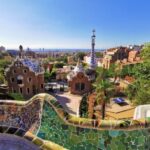 Gaudí's Park Güell: UNESCO Site in Barcelona
Gaudí's Park Güell: UNESCO Site in Barcelona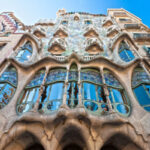 Gaudí's Famous Barcelona Buildings
Gaudí's Famous Barcelona BuildingsIf you want to know other articles similar to Park Güell: A Public Park Designed by Antoni Gaudí on Carmel Hill in Barcelona, Spain you can visit the category WHERE YOU CAN GO.
Deja una respuesta

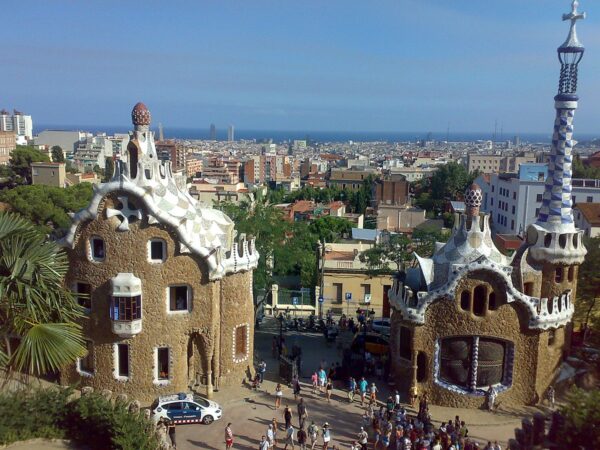
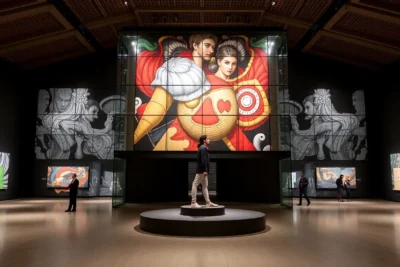
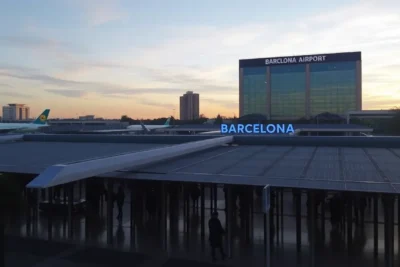

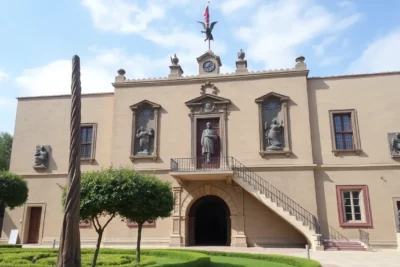
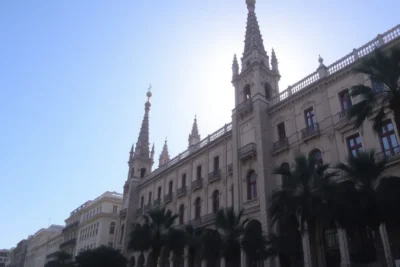
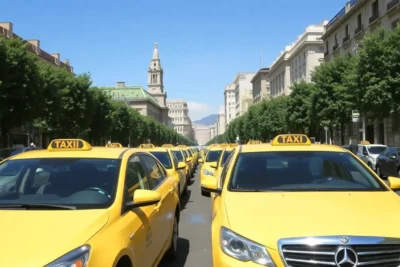
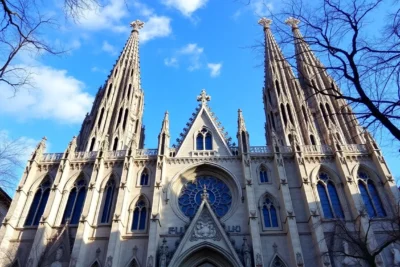
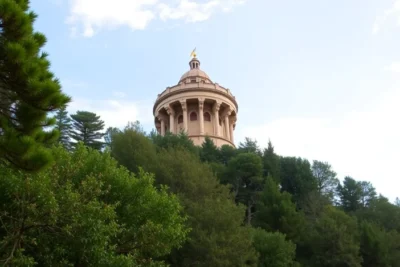
Read more!